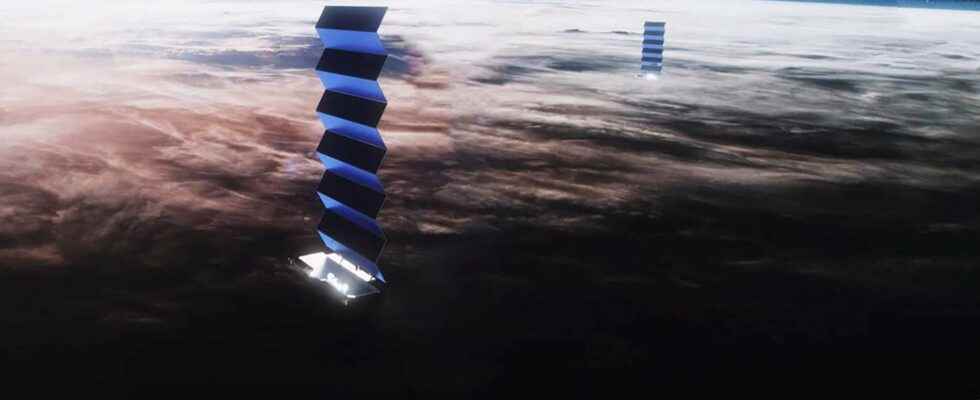You will also be interested
[EN VIDÉO] How to put a satellite in orbit around the Earth? Without our even being aware of it, satellites have become essential to our daily lives. The means of communication, surveillance and a good part of scientific research depend on it. So how do you get a satellite into orbit? The Cnes answers us in this short didactic video.
With more than 2,000 satellites already in orbitthe constellation Starlink provides Internet connection both in town and in remote places far from any other access. Thanks to the authorization obtained to market its offer in Nigeria and Mozambique, SpaceX is now an access provider present on all continents.
From the beginning of 2021, SpaceX had indicated that it was working on version 2.0 of its satellites, without giving further details. In an interview on the YouTube channel Everyday Astronaut, Elon Musk finally revealed more information. According to him, the next generation of satellites will weigh around 1,250 kilograms and will be seven meters long. This is more than four times the weight of version 1.5 (295 kg), sent into space since January 2021.
Elon Musk gives details of the new version of Starlink satellites from 9 minutes 22 seconds. Enable automatic subtitle translation. © Everyday Astronaut
Permission issue prevents Starship from taking off
However, SpaceX cannot yet put them into orbit. For the first generation, the firm used its launcher Falcon 9. However, this one is not powerful enough to lift the new satellites. SpaceX therefore relies on Starshiphis launcher super-heavy space. Before it can get it off the ground, the firm needs FAA clearance, the United States Aviation Agency. It is currently reviewing the environmental impact before giving the fire green. After several delays, the agency was to deliver its verdict on Tuesday, May 31, but finally postponed its decision again, this time to June 13. SpaceX will then have to carry out tests before it can begin putting the new satellites into orbit.
Some had already guessed the weight from previous reviews. SpaceX had indicated that to optimize launches, Starship will be able to put a complete orbital plane into orbit at once, in other words the number of satellites required to circle the Earth, i.e. 110 to 120 satellites. Starship has a capacity of 150 tons, or 1.25 tons (or 1,250 kg) for each satellite.
The Starlink project worries China and astronomers
Elon Musk also indicated that the capacity of satellites to transfer data will be multiplied by ten. This new generation will complement the current constellation, made up of more than 2,000 version 1.0 and 1.5 satellites. Eventually, SpaceX plans to put more than 30,000 satellites into orbit. Elon Musk has also confirmed that the base stations will work with all versions of star linkand that they would be upgraded independently.
Not everyone sees the launch of new satellites of a good eye. Many astronomers are concerned about the degradation of observations due to the light pollution begotten, but the ESO wanted to be reassuring. In February, the Nasa raised concerns that such a large number of satellites could interfere with launches of other rockets and cause more collisions. Also, China sees Starlink as a military communication tool and has therefore considered several solutions for the counter or destroy it. However, until the FAA grants launch authorization in Starship, the Starlink 2.0 satellites will remain on Earth.
Interested in what you just read?
